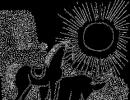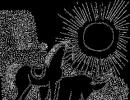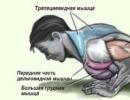Why does a person really need palm muscles. Big Medical Encyclopedia Long palmar muscle receives innervation from
As a rule, we are sure that we know our own body well from head to toe. And if we don’t know something, then we can get the necessary information from books on human anatomy. But there are organs that are rarely mentioned even in medical reference books.
lacrimal points
If you pull back the upper or lower eyelid, you will see a tiny hole in the inner corner of the eyelid. It turns out that there are two such holes for each eye, and there are four in total. They are designed to drain tears. That is why they are called lacrimal points.
Jacobson organ
Thanks to him, animals are able to feel the pheromones emitted by their relatives. Whether humans have this organ is debatable. Scientists believe that human embryos have it, but atrophy as it develops, leaving behind a hole on one side (or both) of the nasal passage. However, there are no sensory neurons. Therefore, we can catch pheromones only with the help of smell.
ear muscles
Some people - no more than 10-20% of all mankind - know how to move their ears, and they do this thanks to the ear muscles associated with the outer ear. A person has three of them, but, by and large, he does not need them.
palmar muscles
Only 86% of all people on the globe have such muscles. They run from elbow to palm. To check if you are a palmar muscle owner, tap thumb on the hand with the little finger, and then tighten the muscles of the wrist. It is believed that the palmar muscles make the wrist more flexible. But modern man does not need this organ. Perhaps it was required in the distant past by our ancestors - primates, for the convenience of climbing trees.
Goosebumps Muscles
"Goose bumps" usually appear when we are cold or afraid of something. This happens due to the compression of the tiny muscles located on the body around the hair follicles. You have probably noticed that animals sometimes have hair standing on end. Our distant ancestors were quite hairy, but modern man does not have hair, so in “extreme” situations, his skin is simply covered with pimples.
Mesentery
This organ officially appeared in medicine only in November 2016. This is a double fold of the abdominal cavity, connecting the intestines with the abdominal region. Previously, it was believed that this function is performed by several organs at once. However, the real purpose of the mesentery is still not entirely clear to specialists.
Tail
The fact that a person has such a part of the body as the coccyx is, of course, well known to everyone. This is an atavism, the remnants of a tail that human ancestors once possessed. But the fact is that people also have tails. They are possessed by human embryos in the first 10 weeks of intrauterine development. And sometimes children are born with a slight bulge in the coccyx area. In the old days, people with a "tail" were mistaken for the offspring of the devil, they were afraid of them as sorcerers and witches. Nowadays, an extra organ is easily removed surgically.
Close your fingers as shown in the picture. See that tendon? That's what it means... Over the past 200 thousand years, man has stepped forward a lot if we are talking about evolution.
Close your fingers as shown in the picture: Even though we are very similar to our ancestors, modern man differs in many physical and anatomical features. This is proved by rudimentary organs that are scattered throughout the human body.
Scientists call vestigial organs those parts of the body that have lost their functions over time, but are still preserved in the human body. Mother Nature considers these organs unnecessary for life, their activity fades, but by themselves they still remain unchanged.
Why some parts of the body and their functions remain in the body, while others completely disappear is a real mystery of nature. Most of them do us no harm, and those that can do it (we are talking about wisdom teeth and the appendix) are easily removed.
Well-known examples of vestigial organs are the appendix, goosebumps, wisdom teeth, tonsils, male nipples, and the outer ear. Once upon a time, these body parts performed important functions in the human body, but today there is no need for them.
How to trace evolution on the example of your organism? Everything is very simple! Place your hand on a flat surface, palm up. Close your little finger and thumb together, and then slightly lift them up.
If you see a ligament in your wrist, then you have a vestigial muscle in your forearm. It is called so: a long palmar muscle (lat. palmris longus).If a muscle is missing from one or both arms, then you are in the 10-15% of the population.
Don't worry if you don't find this muscle. IN modern life she is useless. Studies have shown that the long palmar muscle has no effect on the strength of a person's hand.
It turns out that these muscle fibers are responsible for the release of claws in animals! It is also present in all primates and enhances grip when jumping from tree to tree. It is clear that a person is now to nothing.
It is a short spindle-shaped abdomen and very long tendon, stretching almost from the elbow to the wrist. Oddly enough, 14% of people simply do not have it.
Anatomical experts argue that the absence of this tendon does not affect grip strength in any way. However, in case of any specific injury, when a transplant is needed, it is a good source - a kind of spare part in the human body.
To check if you have it, gather all five fingers into a pinch and bend your wrist - the tendon is clearly visible in the wrist area, provided that it is present. In other mammals, this same tendon is responsible for extending the claws. Apparently, this is why some people do not have it - there is no need to release claws in our species.
Tendons can look very different from person to person. Just as individual is the number of tendons and muscles.
How to find out something personal about the interlocutor by his appearance

Secrets of "owls" that "larks" do not know about How brainmail works - the transmission of messages from brain to brain over the Internet Why is boredom necessary? "Magnet Man": How to become more charismatic and attract people to you 25 quotes to wake up your inner fighter How to develop self-confidence Is it possible to "cleanse the body of toxins"? 5 Reasons Why People Will Always Blame the Victim for a Crime, Not the Perpetrator Experiment: a man drinks 10 cans of cola a day to prove its harm







The long palmar muscle is relatively thin superficial muscle forearms of the anterior group, located centrally. This muscle originates from the common flexor tendon on the medial epicondyle of the humerus, forming a fusiform muscular belly between the flexor carpi radialis and flexor carpi ulnaris.
The structure of the long palmar muscle can vary from client to client, but in most cases this muscle lies over the flexor tendon retinaculum in the wrist. The distal tendon attaches to the flexor retinaculum and then enters the triangular palmar aponeurosis. Just like the subcutaneous muscle of the neck, located on the front surface of the neck, the long palmar muscle attaches to soft tissues, and not to bone.
Since the long palmar muscle is located centrally in the forearm, it does not participate in abduction or adduction of the wrist. The main work of this muscle is to flex the wrist and tension the palmar fascia, aponeurosis - a plexus of connective tissue that attaches to the base of the second, third, fourth and fifth metacarpal bones. This structure protects the underlying flexor tendons of the fingers and strengthens the skin of the palm. When tensed, the palmar fascia helps cup the palm. This provides grip strength when holding objects in the hand.
Since the long palmar muscle originates from the medial epicondyle of the humerus, it is involved in the flexion of the forearm in elbow joint. However, she does not participate in this movement as intensively as biceps shoulder, brachialis and brachioradialis muscles. This muscle helps maintain joint stability when the elbow is close to full extension. Examples of movements in this position are swinging a club when playing golf, throwing a ball, or hitting from behind the head, for example, when chopping wood with an ax. Its most common dysfunction is fibrosis of the palmar aponeurosis, also known as Dupuytren's contracture. With the development of this disease, there is a limitation of mobility when extending the fingers, especially when extending the ring and little fingers. There may also be superficial trigger points, a tingling sensation in the palm that radiates to the base of the thumb but not to the fingers themselves. Also, clients may note painful sensitivity of the palm and difficulty in holding objects.
Activities that require a person to grasp or apply pressure to the palm (such as walking with a cane) exacerbate these symptoms. To prevent the development and get rid of these problems, it is necessary to restore the physiological range of mobility, relieve muscle tension and improve blood flow in this muscle, as well as get rid of adhesions in the palmar fascia. 
Palpation of the long palmar muscle
Position: the client lies on his back, the forearm is in the supination position.
1. Passively bend your arm at the elbow, then bend the palm of your wrist to relax the muscles.
2. Locate the medial epicondyle and flexor tendon with your thumb.
3. Move distally and medially along the muscular belly of the palmar longus muscle.
4. Ask the client to dome their palms while resisting this movement at the base of the fingers and thumb to determine the exact location. 
EXERCISE FOR CLIENTS AT HOME
WRIST EXTENSION STRETCH
1. Stand or sit, extend your arm forward with your palm up.
2. Slightly bend your arm at the elbow, and with the other hand pull down your fingers outstretched hand to feel a slight stretch in the muscles of the palm and wrist.
3. Try to stretch more intensively, gradually unbending the arm at the elbow.
4. Stretch until you feel the release of muscle tension in the palm and hand.
Ecology of life. Cognitively: 200 muscles are included in the work with just one step. The heart, the most enduring muscle in the body, works constantly. Muscles grow and train...
200 muscles are included in the work with just one step. The heart, the most enduring muscle in the body, works constantly. Muscles grow and train, tons of sports literature have been written about them. We will tell you the most interesting.
1. How many muscles in total?
In total, there are from 640 to 850 muscles in the human body. During a simple walk, the body uses up to 200 muscles. Muscle tissue is 15% denser and heavier than fat, so a trained person can outperform a full but unathletic person of the same height in weight. Muscles account for an average of 40% of body weight.
2. The most-most muscles
The most enduring human muscle is the heart, the shortest is the stirrup (it strains the eardrum in the ear). Its length is 1.27 mm. The most longus muscle human body- tailor. The most fast muscle- blinking. There are different opinions about which muscle of the body is the strongest. It is often said that the most powerful muscle is the tongue, but the tongue is made up of several muscles, so this view is false. They are very strong chewing muscles(the force of their pressure can reach 100 kilograms), as well as calves and gluteal muscles.
3. Such different muscles
Human muscles are not the same. Therefore, they need to be trained in different ways, and the recovery time and different groups muscles is different. The triceps recover the fastest, the back muscles the slowest. This must be taken into account during training, the muscles need rest no less than the load, since the growth of muscle fibers occurs due to the effect of supercompensation. Full muscle recovery occurs only 48 hours after intense exercise.
4. Muscle Endurance
Endurance - the ability of a muscle to maintain performance over time. The most enduring muscle human body, as we have said, - the heart. According to doctors, the "margin of safety" of the average heart is at least 100 years. Muscles begin to tire when they run out of glycogen, and fatigue is also explained big amount in muscle calcium. Previously, it was believed that the main culprit of fatigue is lactic acid. Columbia University conducted a study in which mice swam daily for three weeks and cyclists exercised for three days. It turned out that after exercise in the chemical structure of the ryanodine receptor, which is responsible for muscle contraction, there were major changes- there was a gap in the cell membrane through which calcium seeped into muscle cells.
5. Muscles and emotions
It is known that the movement of facial muscles is directly related to human emotions. At the beginning of the last century, the Russian scientist Ivan Sikorsky compiled a classification of facial expressions: the muscles around the eyes are responsible for the expression of mental phenomena, the muscles around the mouth are for the expression of acts of will, and all the muscles of the face express feelings. In 2011, scientists managed to discover that human facial expressions occur long before birth. Even during the prenatal period, the child is already able to move facial muscles, smile, raise eyebrows in surprise or frown. facial muscles make up 25% of the total number of muscles, while smiling, 17 muscle groups are involved, during anger or crying - 43. One of better ways maintaining smooth skin on the face - kissing. With them, from 29 to 34 muscle groups work.
6. Muscles and genes
Amazingly, muscle training has an impact not only on the person himself, but also on his genes. They undergo modifications that further help the muscle fibers to be ready for new loads. In order to prove or disprove this, scientists from the University of Aarhus recruited a focus group of 20 volunteers and conducted a 20-minute aerobic exercise on an exercise bike with them. After the study, a quadriceps biopsy was taken from the subjects to see how the genes had changed in their cells. It turned out that exercise stress activates genes related to muscles. This is because cells store DNA with the help of methyl groups. If they are removed, the gene information is converted into enzymes and proteins, which are necessary for burning calories, gaining muscle mass and oxygen consumption. After the experiment, the number of methyl groups decreased in all participants in the study - that is, the muscles adapted to an increase in metabolism.
7. Muscles and telepathy
A simple person is not able to establish control over all the muscles of the body, therefore, unconscious muscle contractions can serve as an indicator of hidden thoughts or intended actions for knowledgeable people. Psychologists high level and "telepaths" can use knowledge about these processes. Wolf Messing, one of the most famous telepaths, explained his phenomenal abilities not by magic, but by a thorough knowledge of the work of human muscles. He said: “This is not mind reading, but, so to speak, “muscle reading” ... When a person thinks hard about something, brain cells transmit impulses to all the muscles of the body.”
8. Long palmar muscle
Only one in six people on earth have long palmar muscles on both hands. Some have them on only one of their hands. These muscle fibers are responsible for the release of claws in animals. A person, of course, does not need such a function. The long palmar muscles are thus a vestige used by surgeons, if necessary, as a material for muscle transplantation.
9. Muscles and chocolate
Oddly enough, one of the most beneficial foods for the heart and muscles in general is dark chocolate. Research conducted at Wayne University in Detroit revealed the effect of the substance epicatechin contained in dark chocolate on the growth of mitochondria in muscle cells. Scientists at the University of L'Aquila also conducted a study in which they gave subjects 100 grams of chocolate for 15 days and measured their blood pressure. During the experiment, blood pressure normalized in people, blood circulation improved. Accordingly, moderate consumption of dark chocolate can be considered as a prevention of heart disease and atherosclerosis.
10. Muscle Loss
Muscles don't last forever. After 40 years, they begin to be actively burned, a person begins to lose from 2 to 3 percent per year. muscle tissue, after 60 years - up to 5%. Therefore, training in adulthood is no less important than in youth. published






